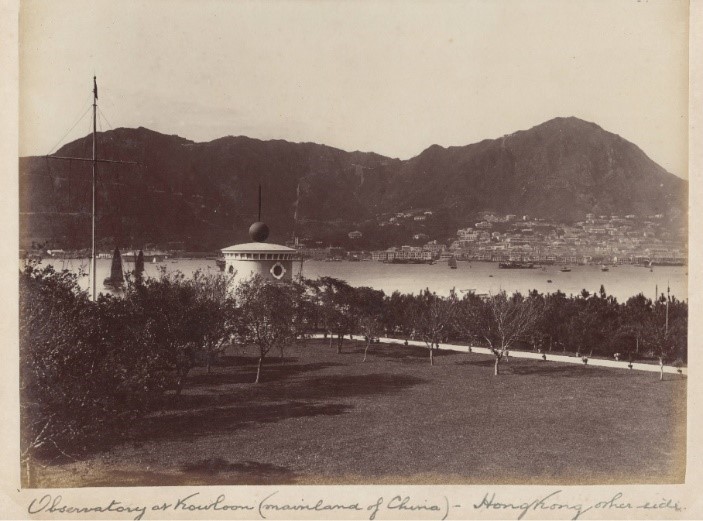A Brief History of “Typhoon Gun”
A Brief History of “Typhoon Gun”
CHOY Chun-wing and LUI Yuk-sing
May 2023
While you are probably familiar with the current numbered tropical cyclone warning signal system (1-3-8-9-10) in Hong Kong, have you ever heard of “typhoon gun”?
Soon after the establishment of the Hong Kong Observatory in 1883, a tropical cyclone warning system was implemented as one of the main tasks of the Observatory. The signal system consisted of the non-local and local warning signals at the time. The non-local signals were to provide mariners and shipmasters with the position of tropical cyclone, its direction and speed of movement; whereas the local signals provided warning of the threat of winds associated with tropical cyclones to the public.
Firing typhoon gun[Note] was the first local tropical cyclone warning signal adopted by the Observatory after its establishment. At that time, the typhoon gun was placed at the Police Barracks in Tsim Sha Tsui, facing the Victoria Harbour. When a tropical cyclone was approaching and was expected to bring gales to the territory, the typhoon gun would be fired once to warn the public. When winds with hurricane force were expected locally, the typhoon gun would be fired twice. When the wind direction was likely to change suddenly, the typhoon gun would be fired again to remind the public. According to available records, the typhoon gun was fired for the first time on 21 August 1884, but no gales were recorded at the Observatory and Gap Rock (a small island about 40 kilometers southwest of Hong Kong). It is worth noting that the typhoon gun was also used as the mail gun in announcing the arrival of postal services from London at that time, thus easily causing confusion to the public. In 1886, the Director of the Observatory, the Acting Harbour Master and the Postmaster General recommended that the use of mail gun should be discontinued.
After the disastrous typhoon that battered Hong Kong in September 1906, a review committee that was set up at that time made suggestions on the tropical cyclone warning signal system. Since 1907, the typhoon gun was replaced by explosives which produced louder sounds. When winds with hurricane force were expected locally, three explosives would be fired at the Police Barracks and the Harbour Master’s Office at intervals of ten seconds. Moreover, a Black Cross was also hoisted above the non-local signals. This is the predecessor of the hurricane signal later (that is, the No. 10 typhoon signal in 1931/the No. 7 typhoon signal from 1917 to 1930). After the introduction of the local numbered tropical cyclone warning signal in 1917, the measure of firing explosives was maintained till 1937. The last time that explosives were fired locally was in September 1937.
The records of the use of typhoon gun and explosives over a century ago were mainly documented in historical reports and newspapers. In recent years, the Hong Kong Observatory recovered and compiled relevant historical records from 1884 to 1937 and showed them in the webpage.

Fig.1 The Time Ball Tower and the mast in the Police Barracks at Tsim Sha Tsui c. 1886. According to historical documents, the typhoon gun was placed at the foot of the mast, but unfortunately it was not shown in the picture (courtesy of Mr. Shun Chi-ming).
Note:
[1] Before the establishment of the Hong Kong Observatory, the typhoon gun was fired and the black drum was hoisted by the Harbour Master starting from 1877 to warn bad weather associated with tropical cyclone.
[1] Before the establishment of the Hong Kong Observatory, the typhoon gun was fired and the black drum was hoisted by the Harbour Master starting from 1877 to warn bad weather associated with tropical cyclone.